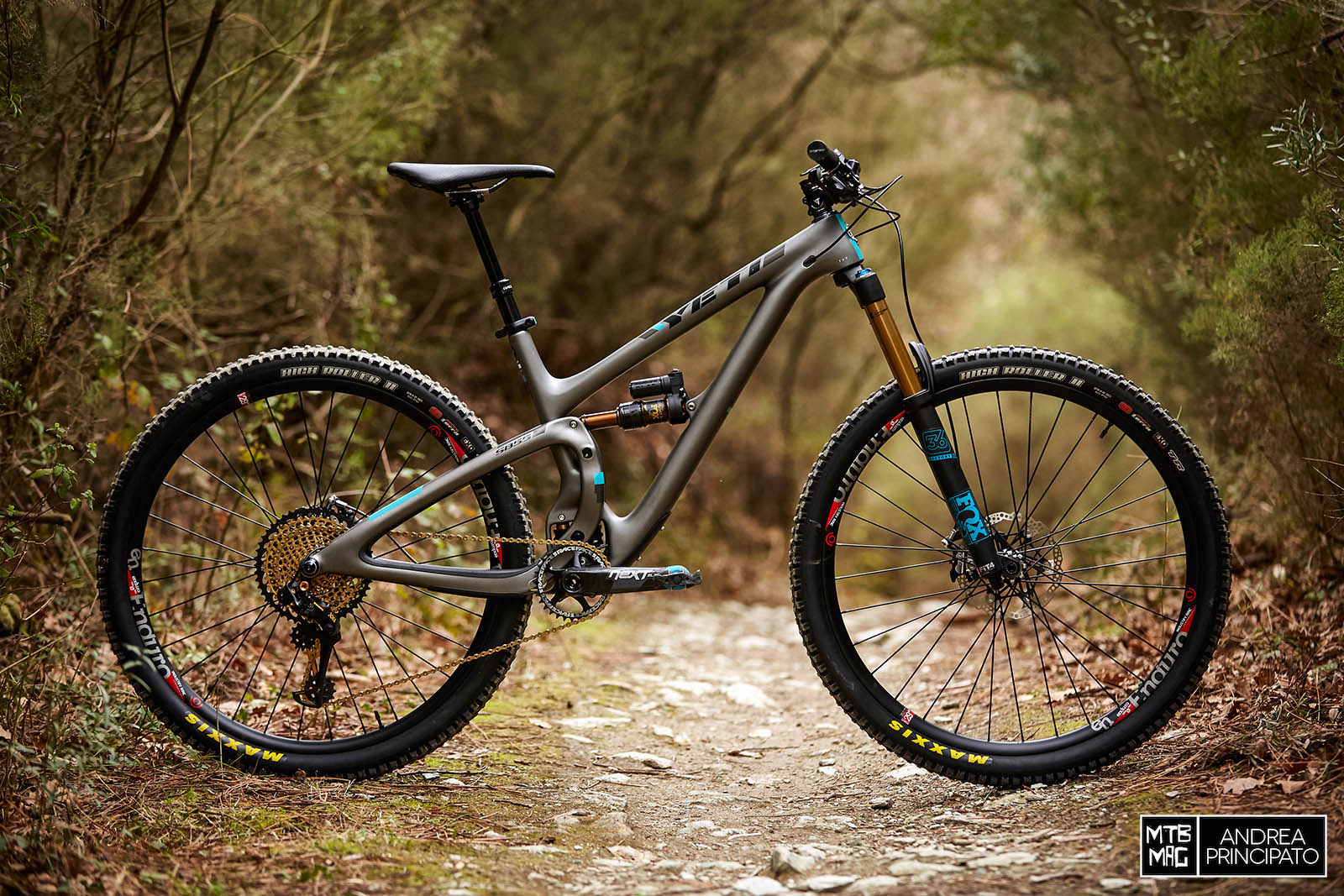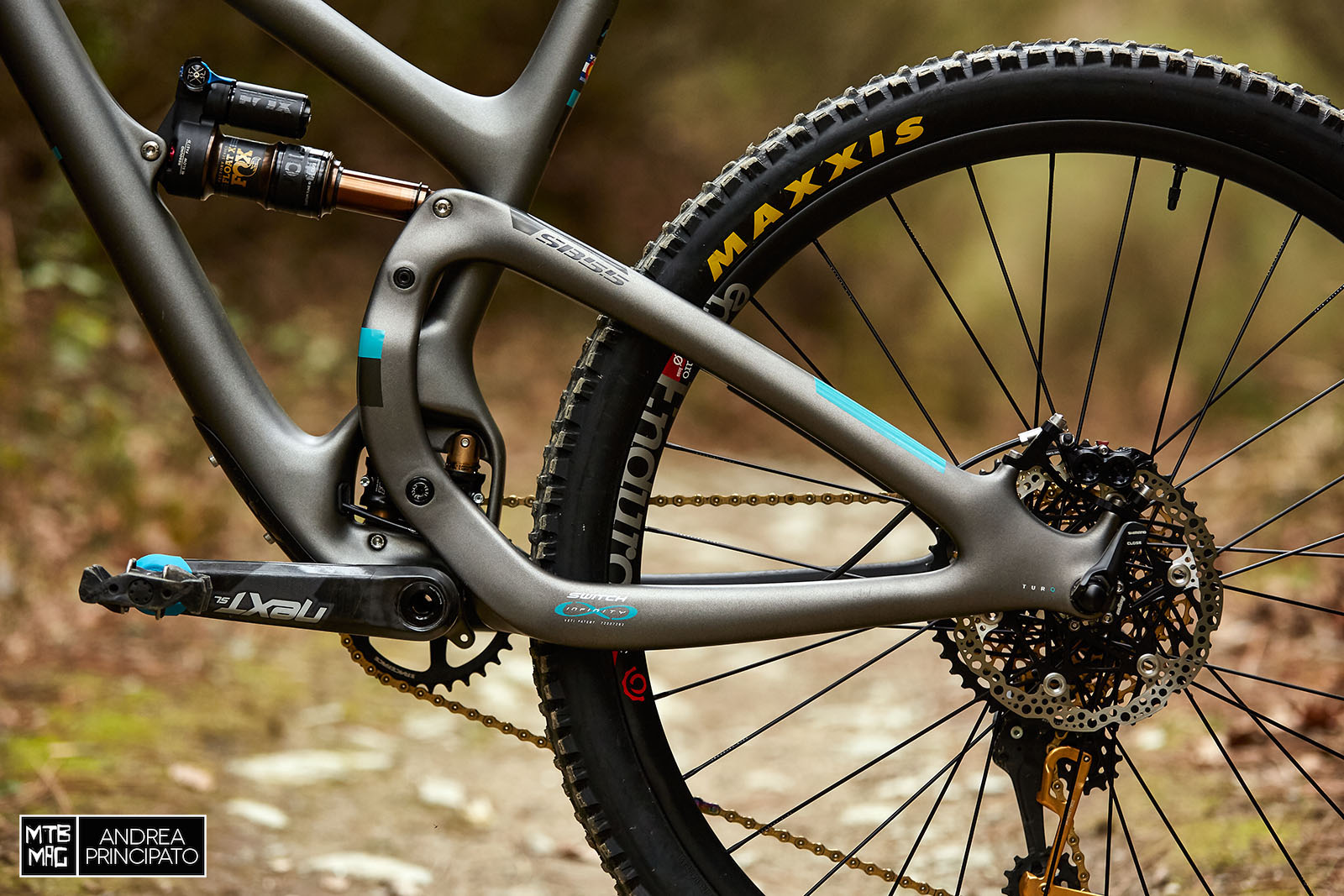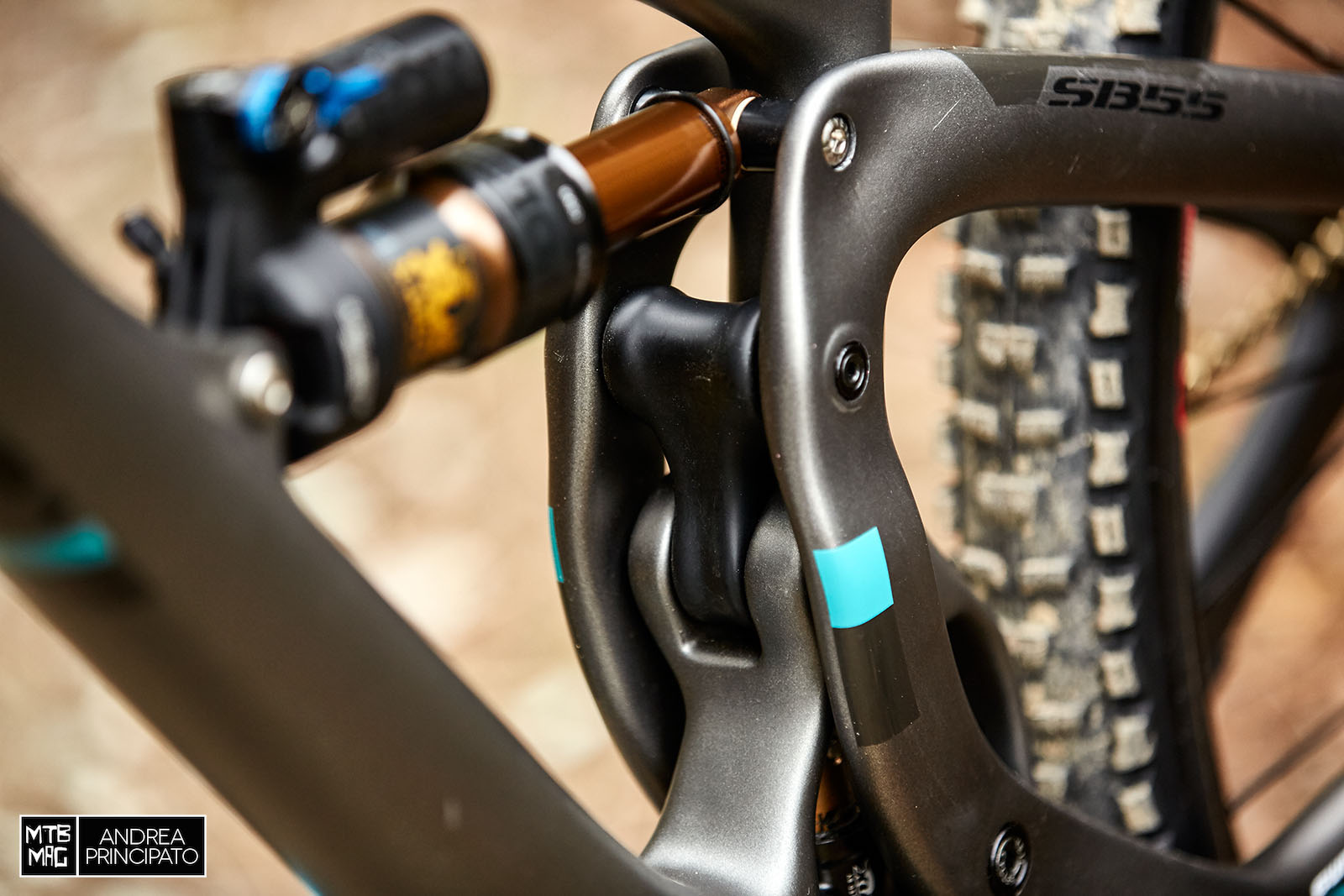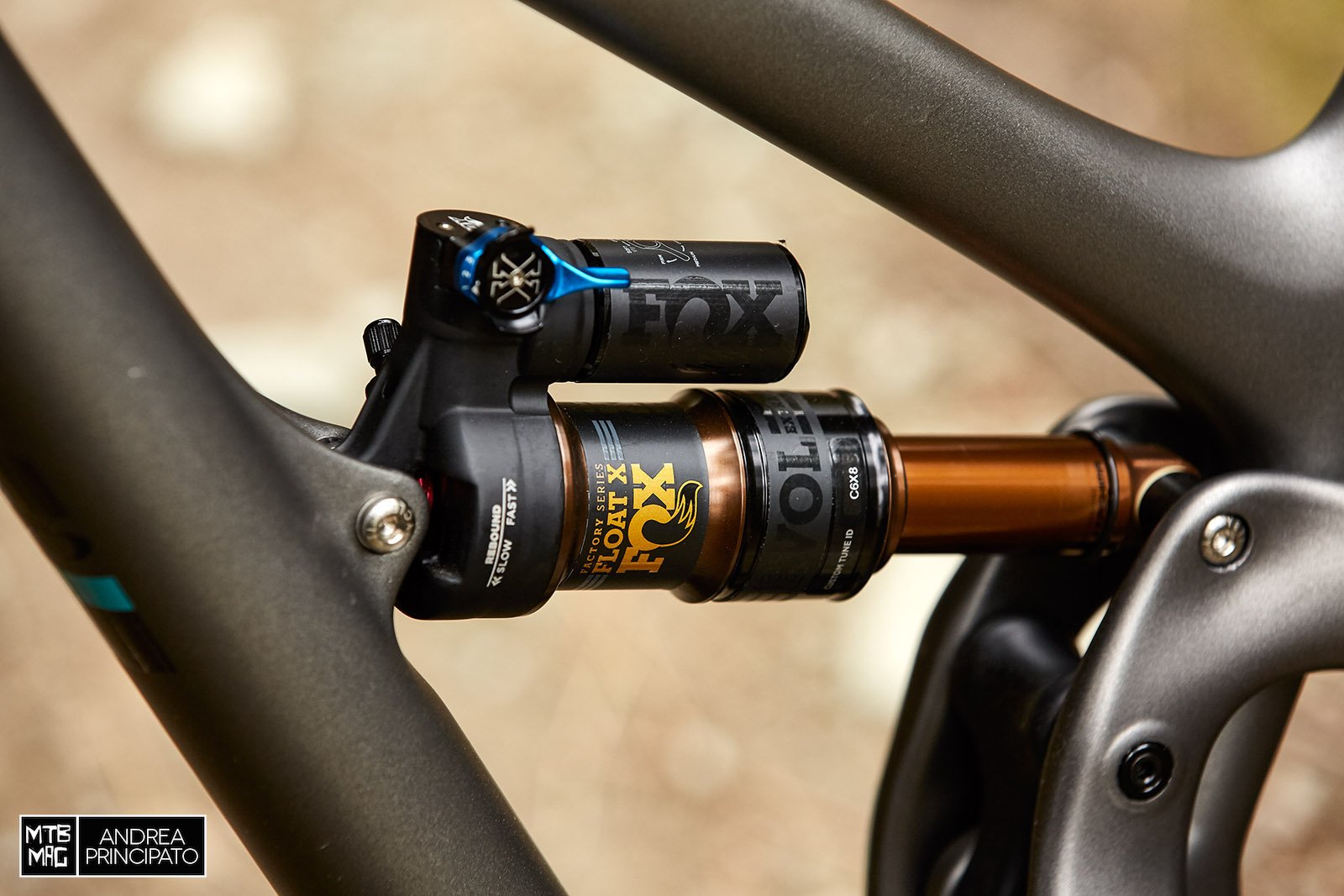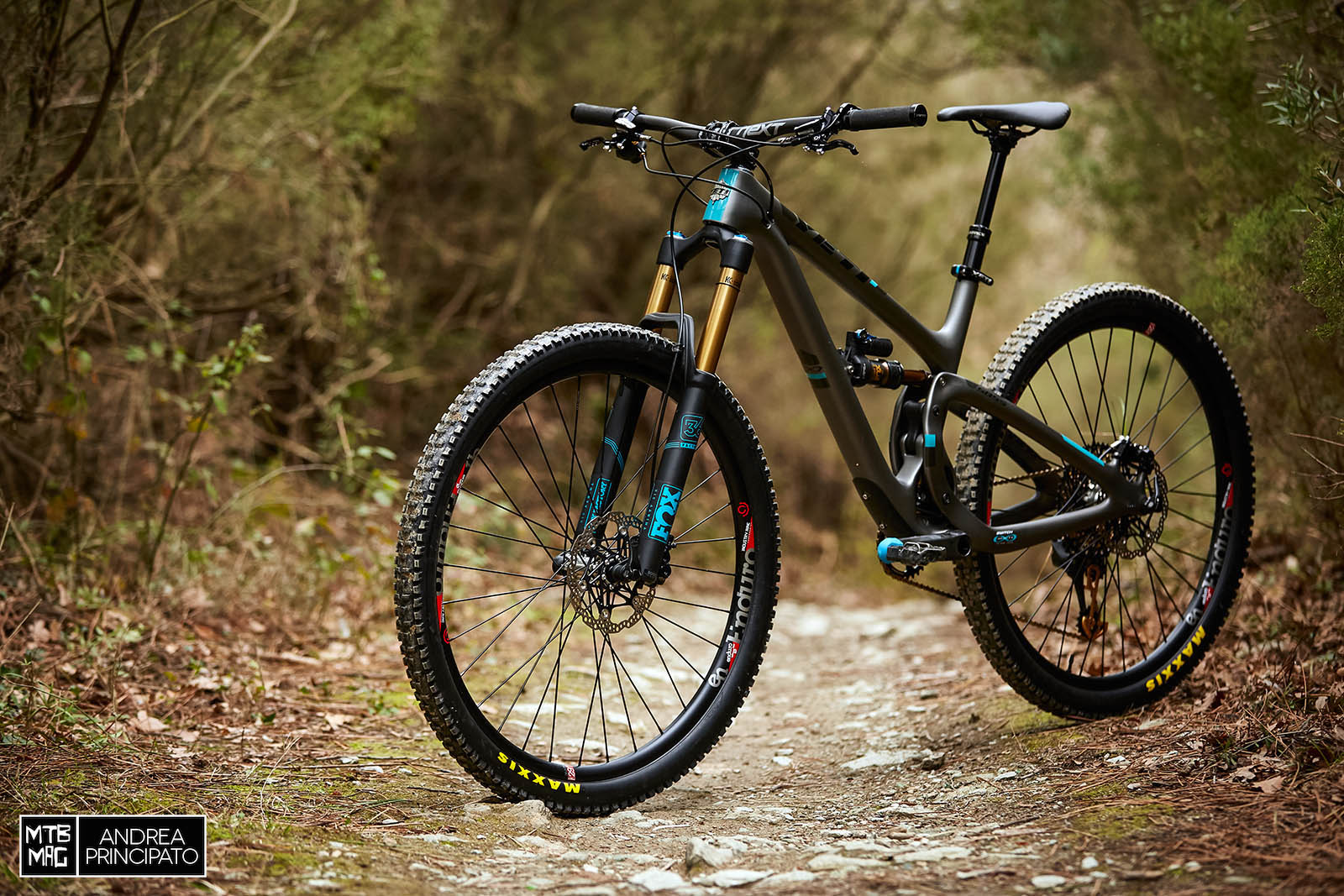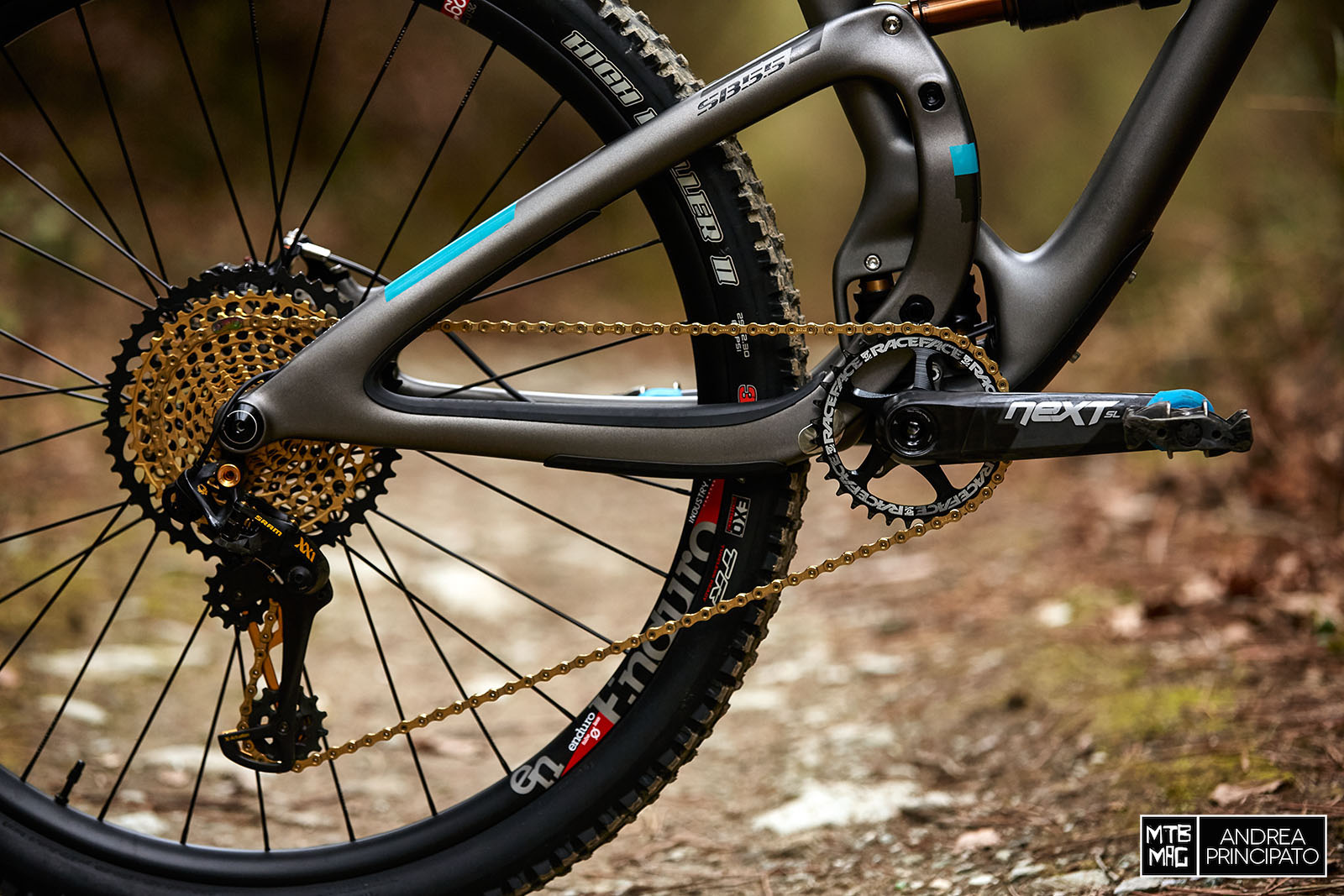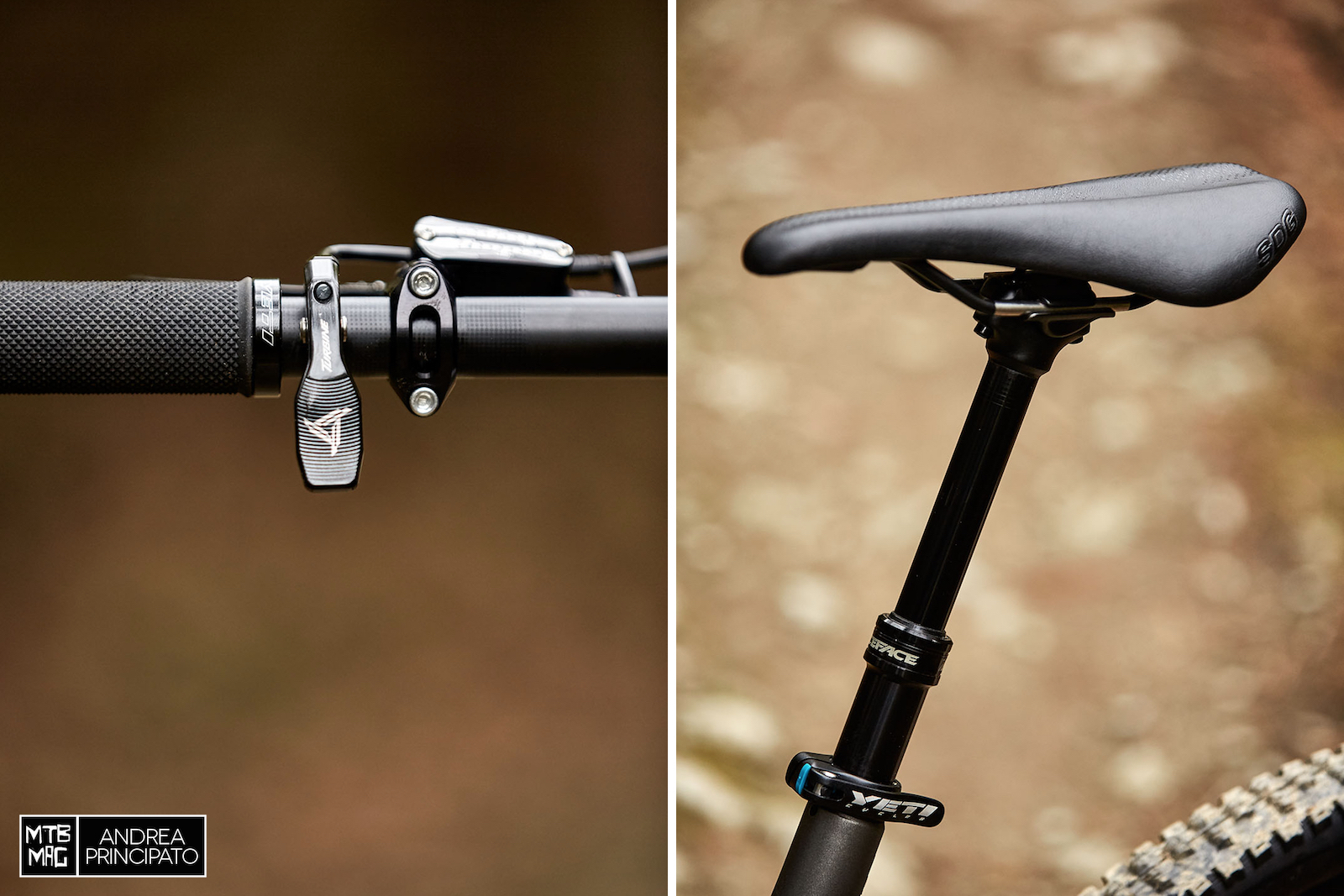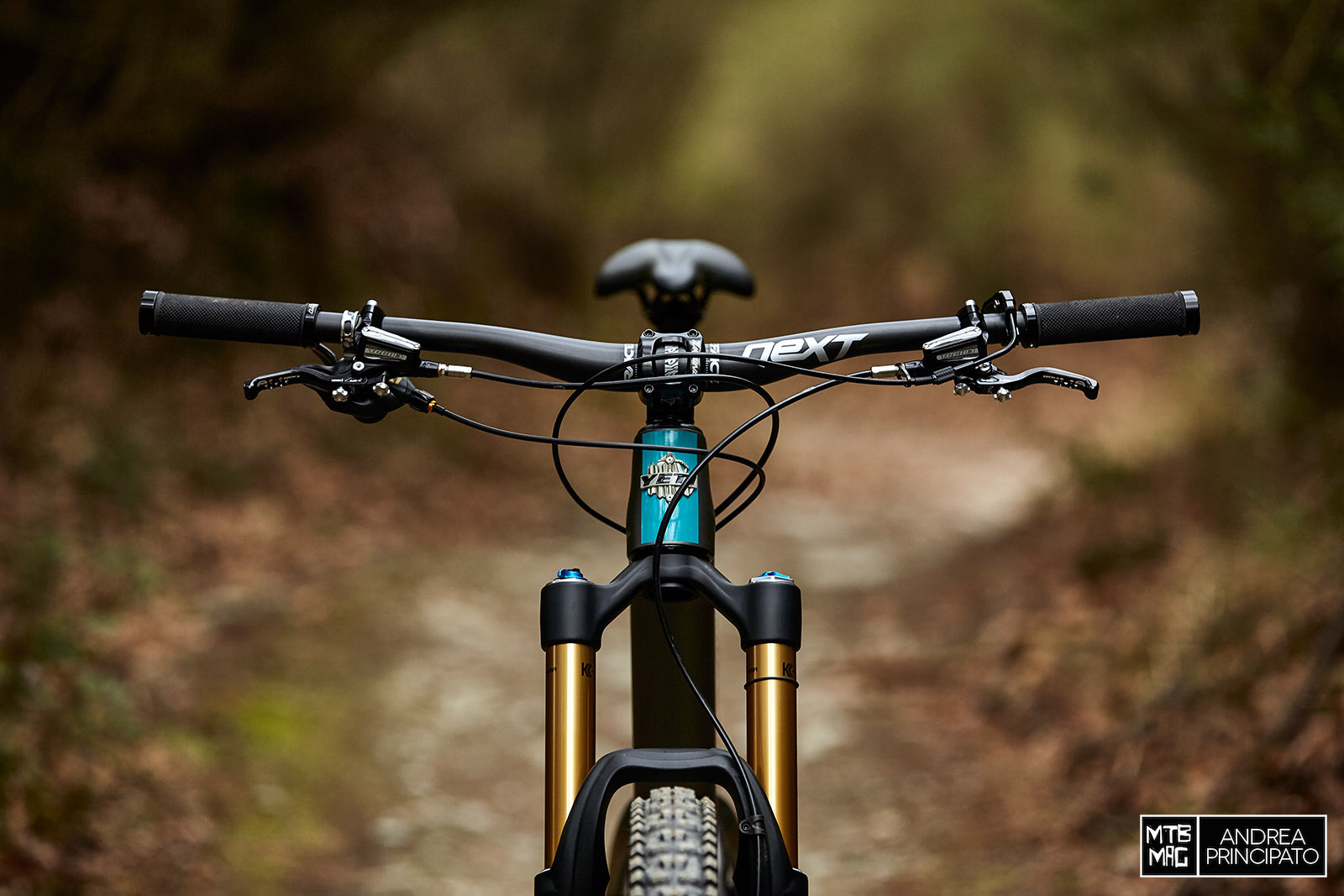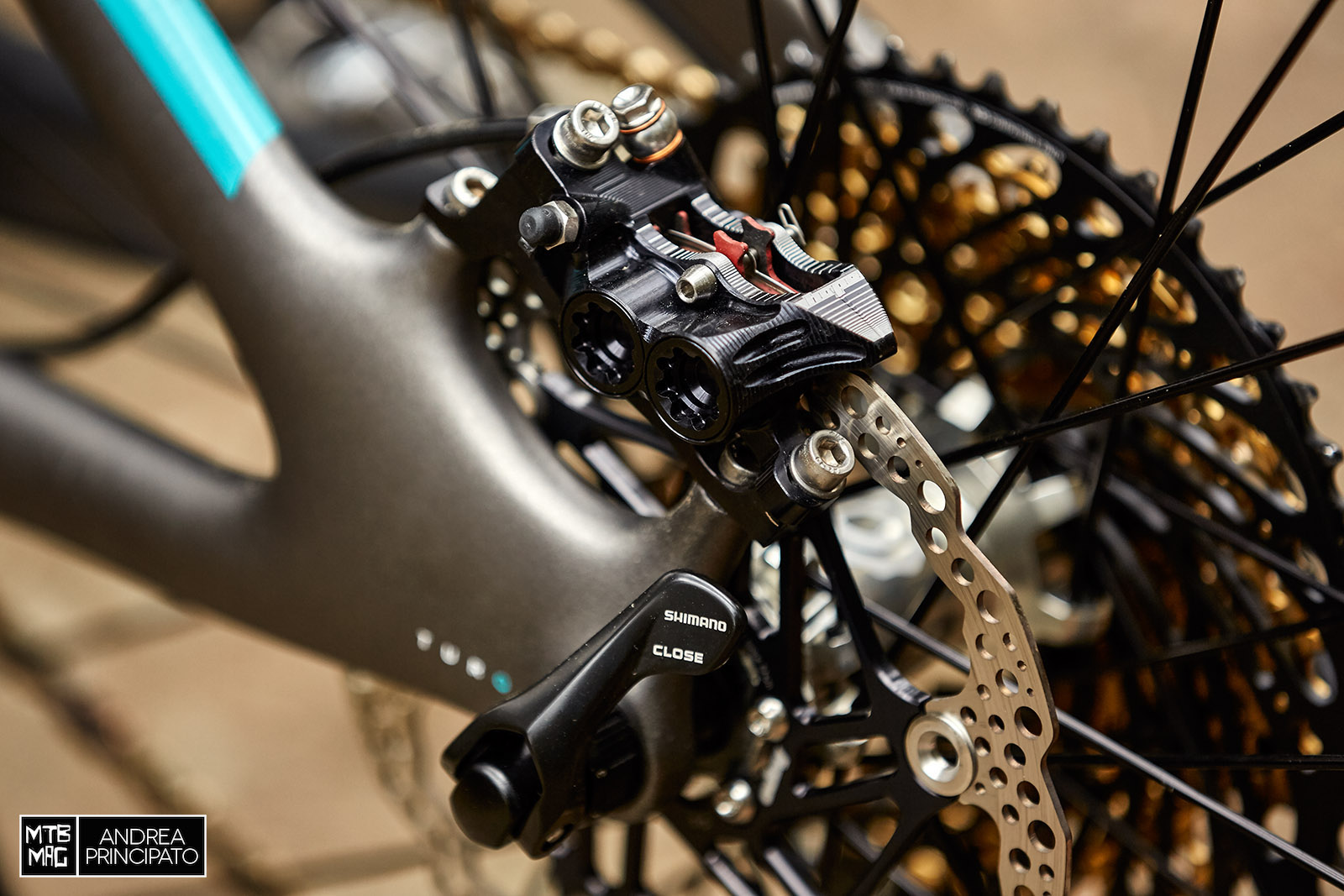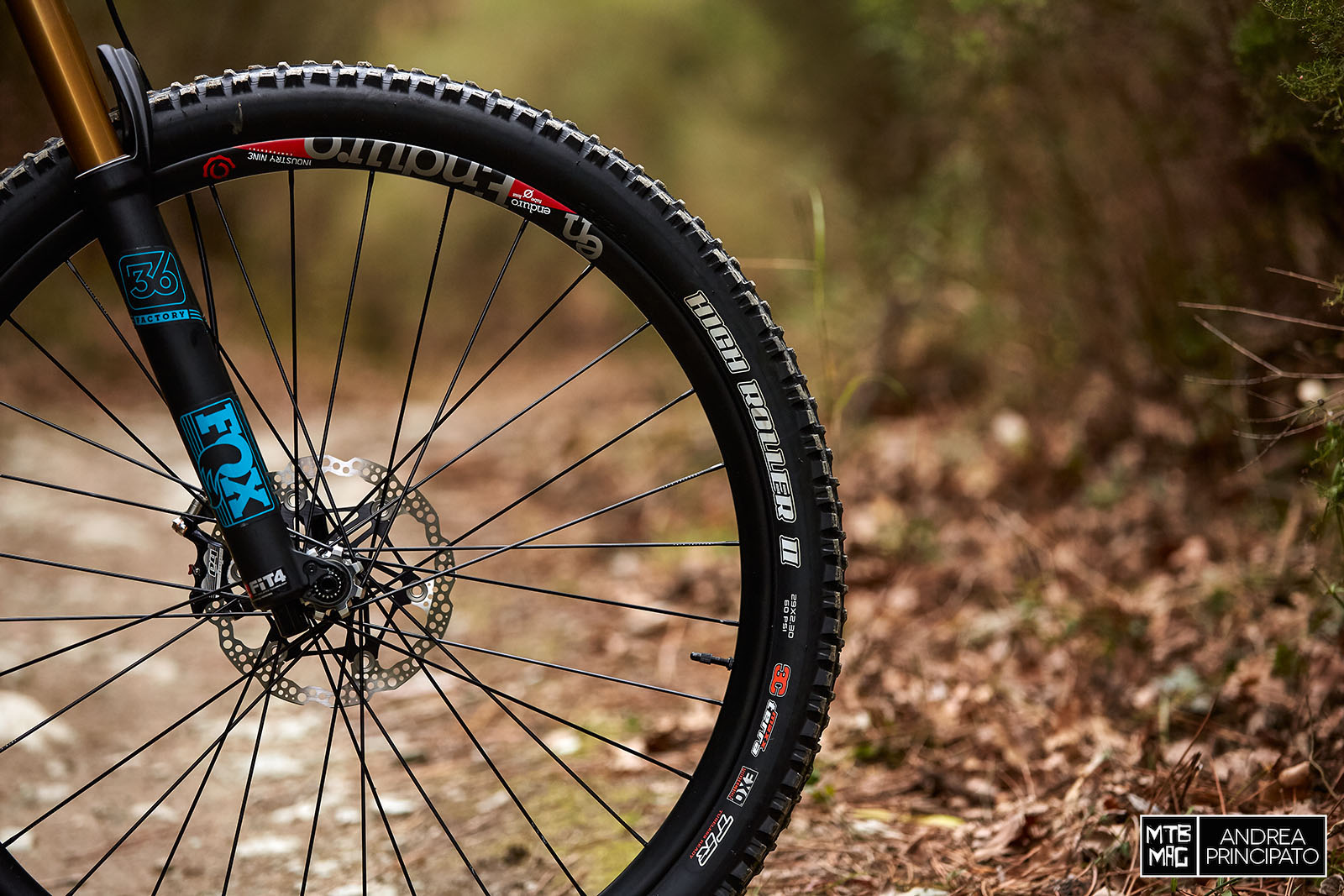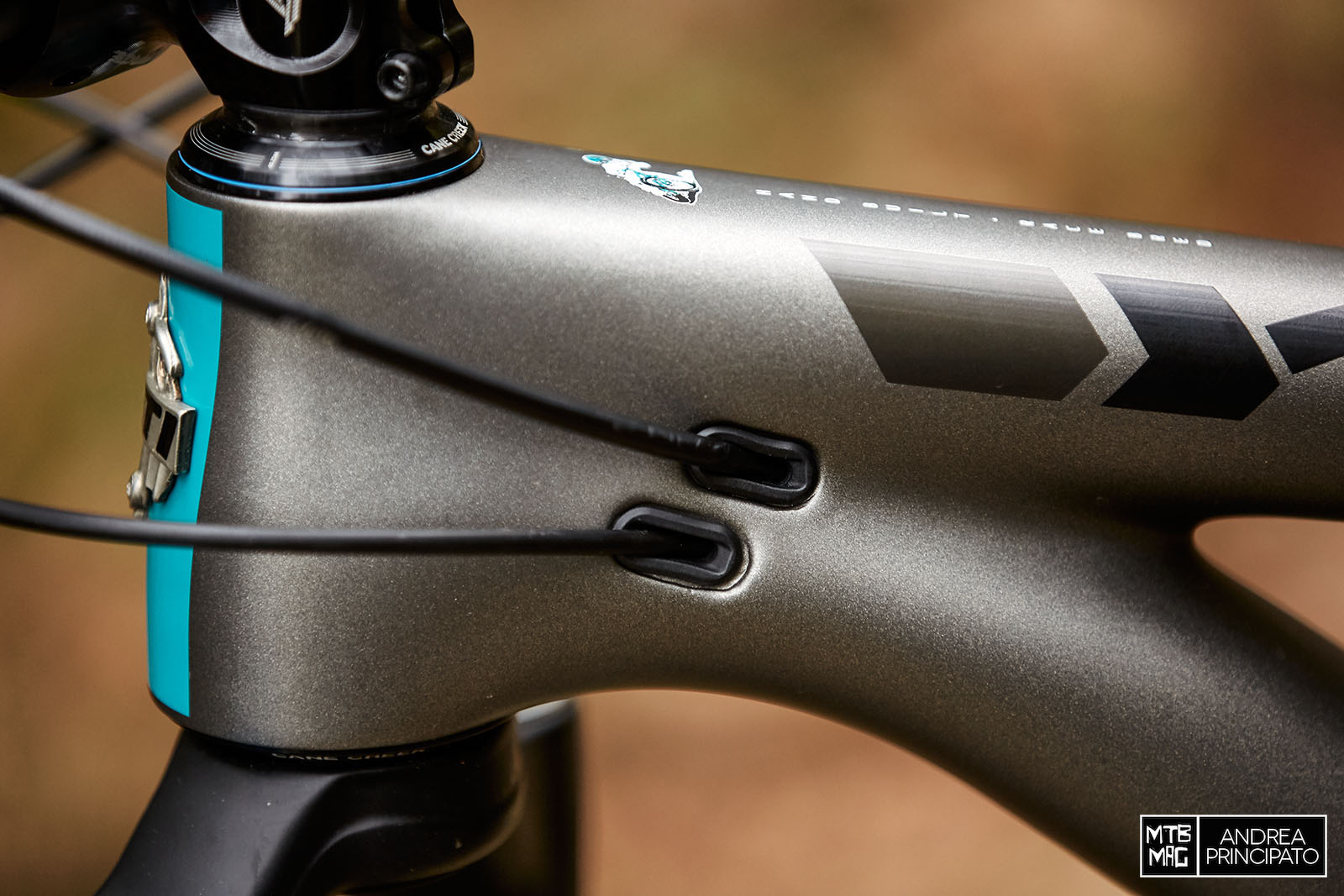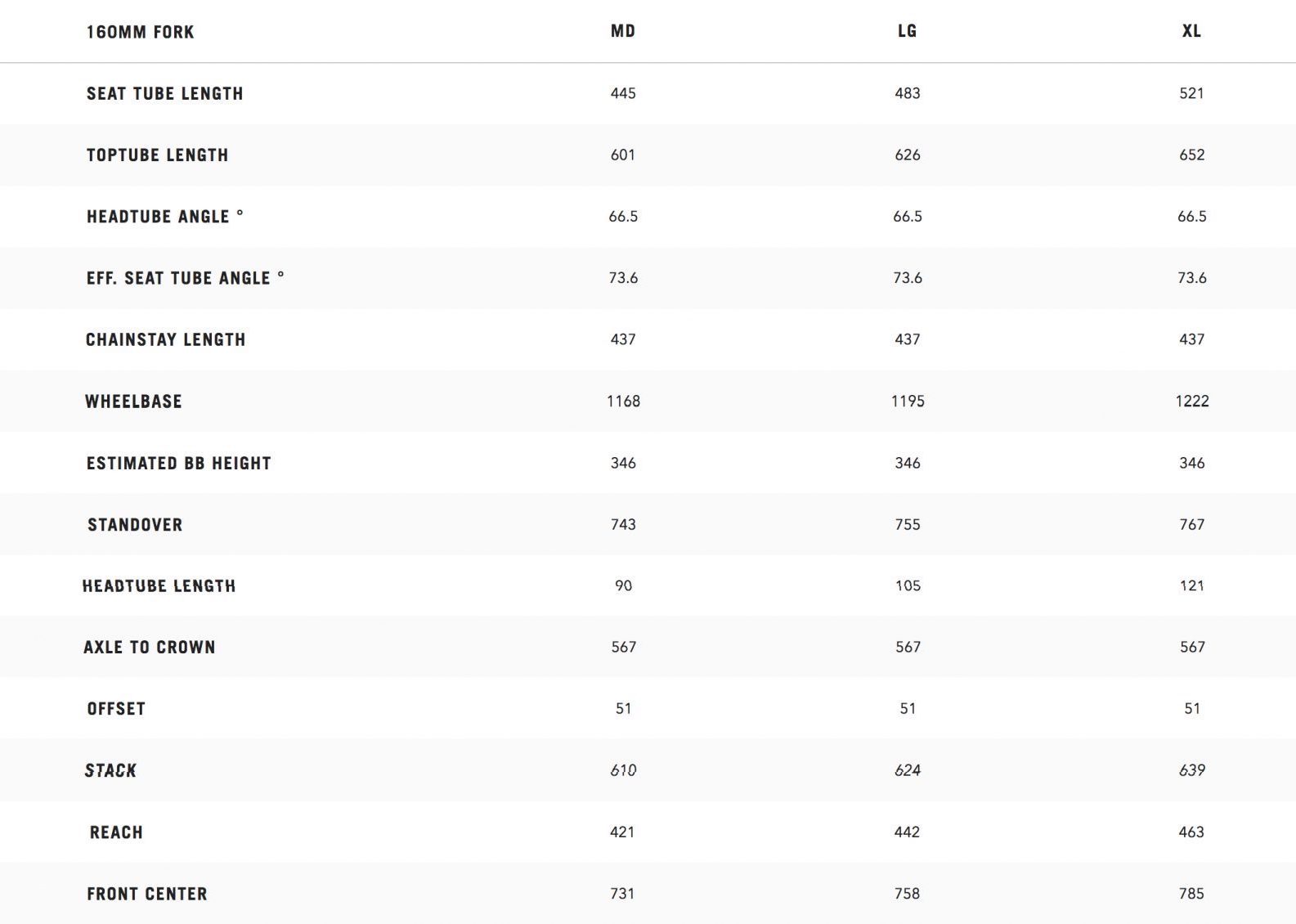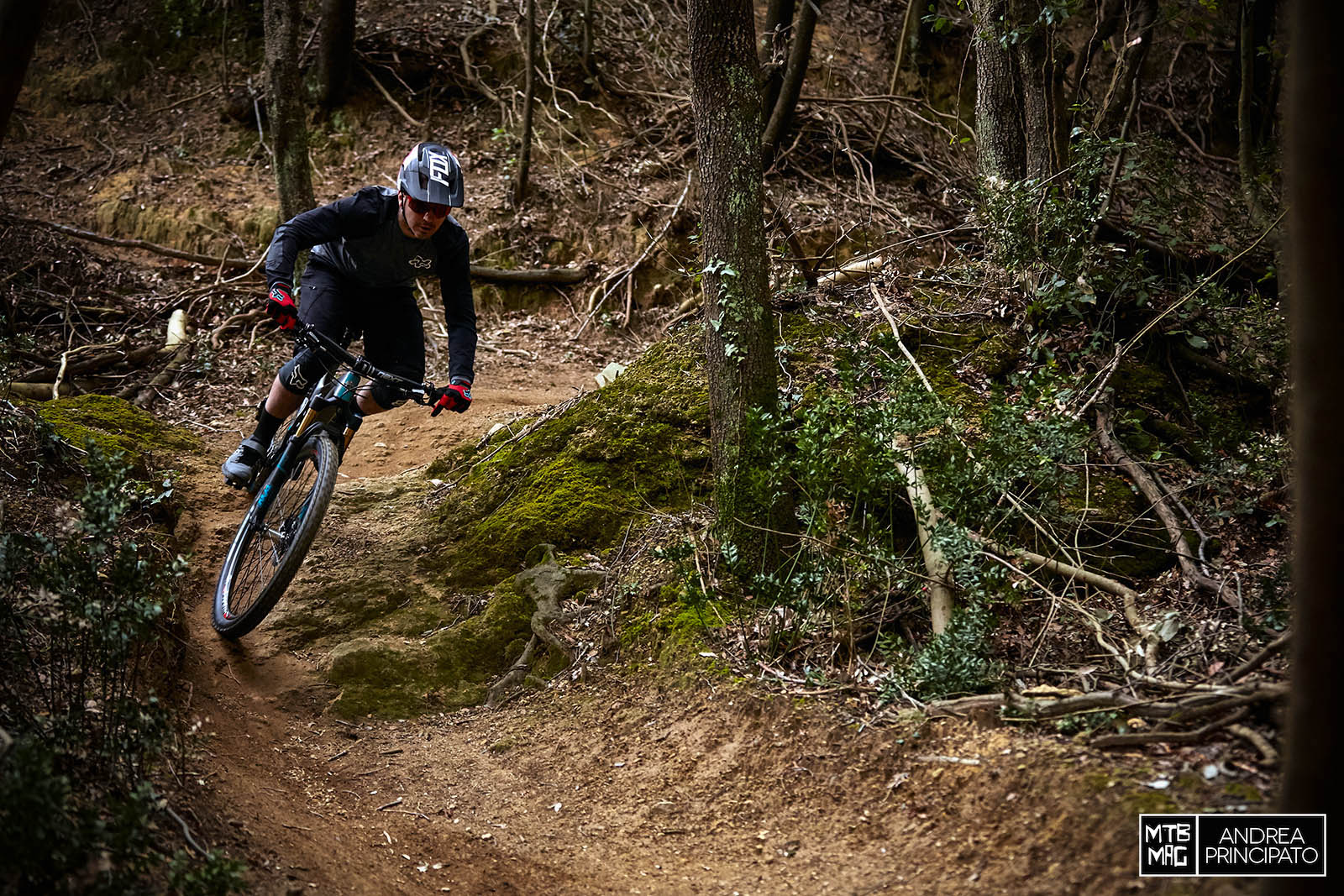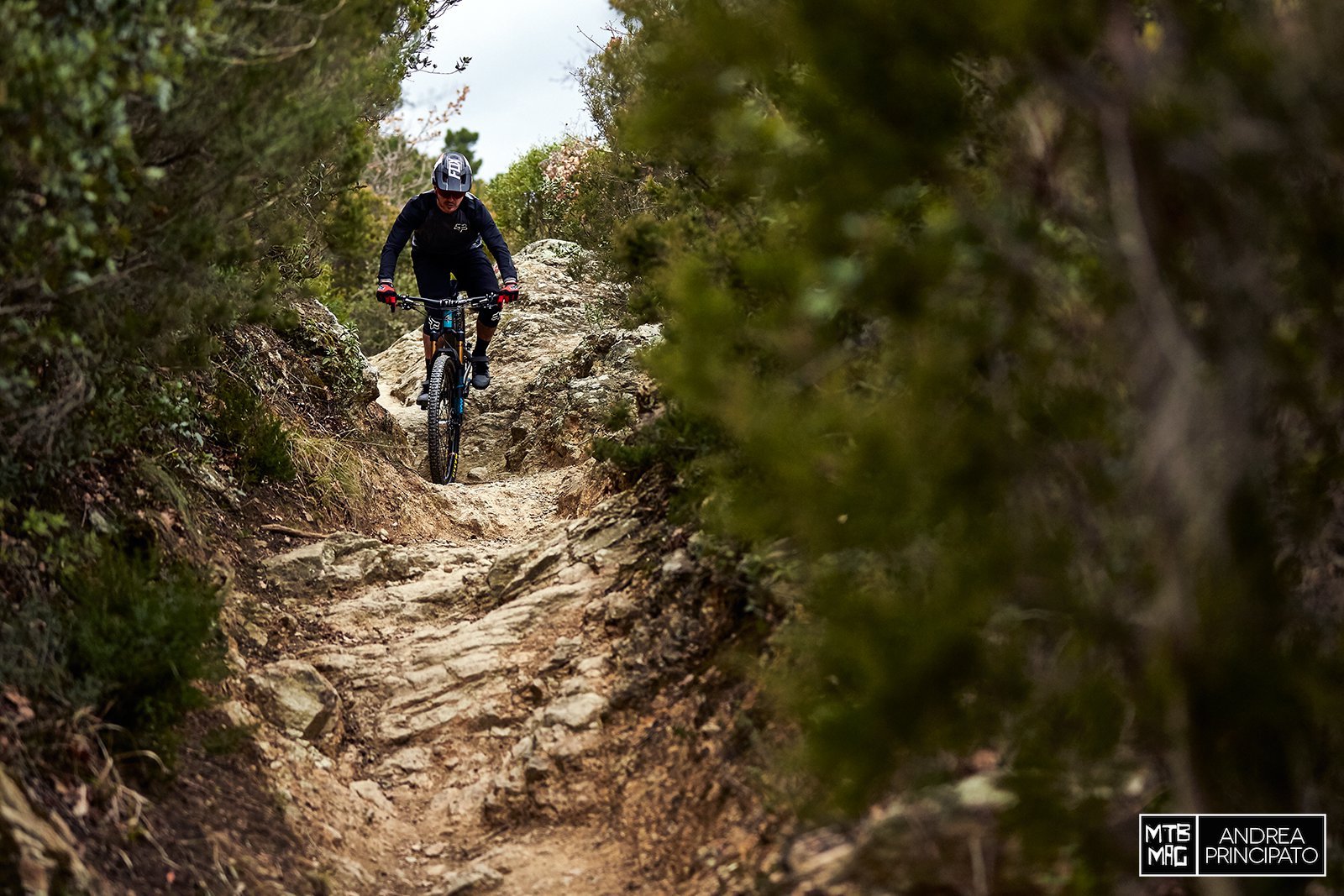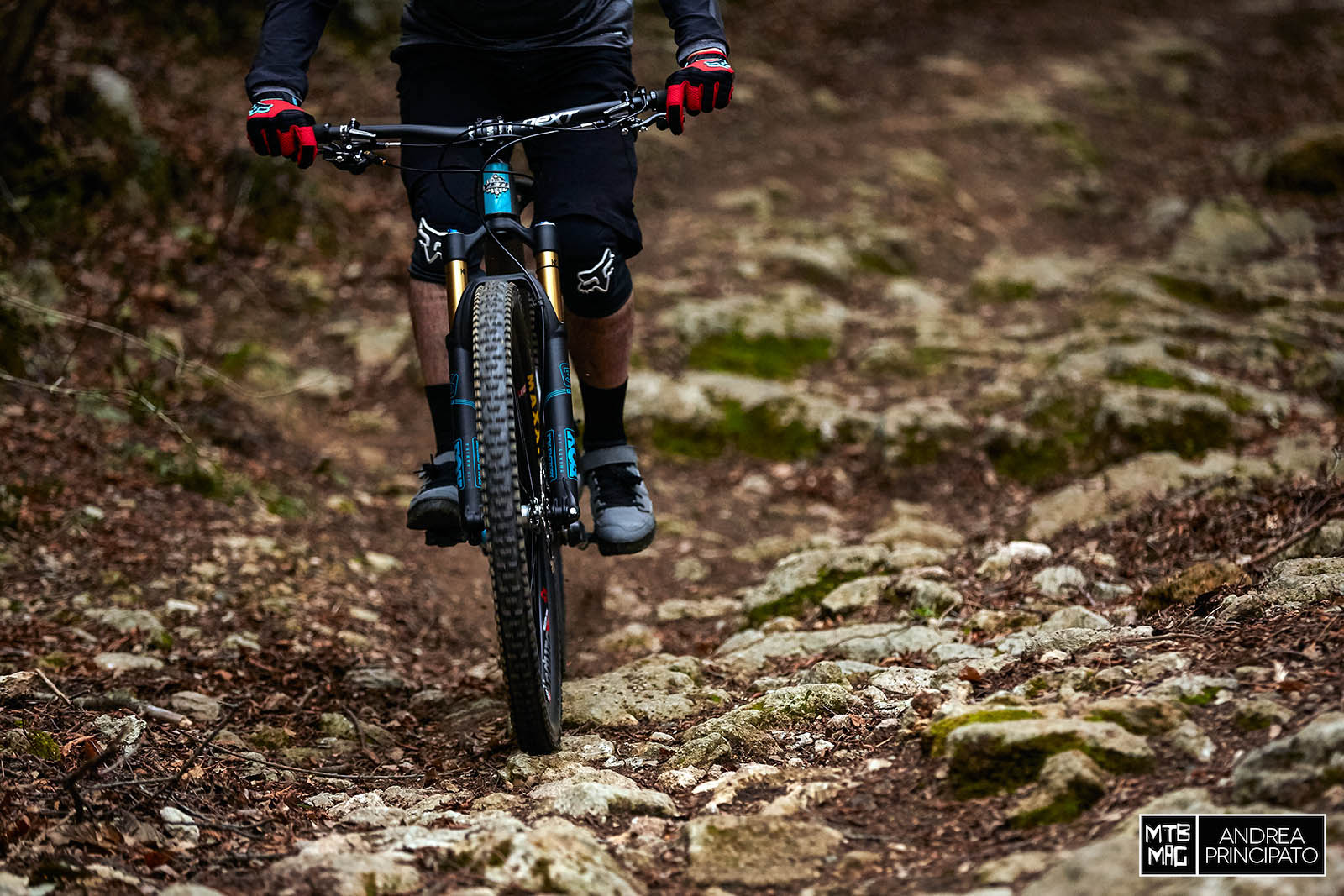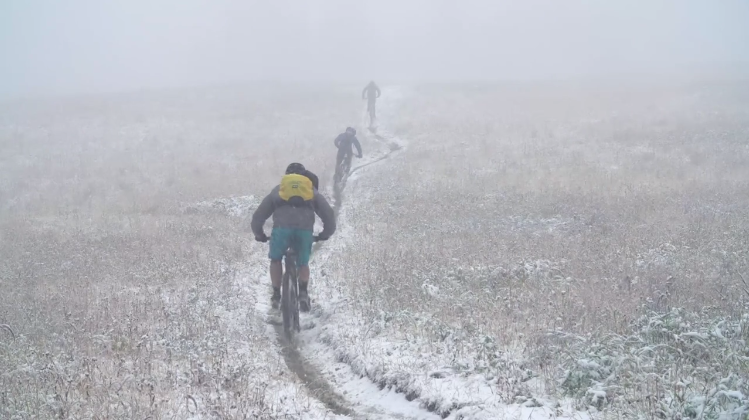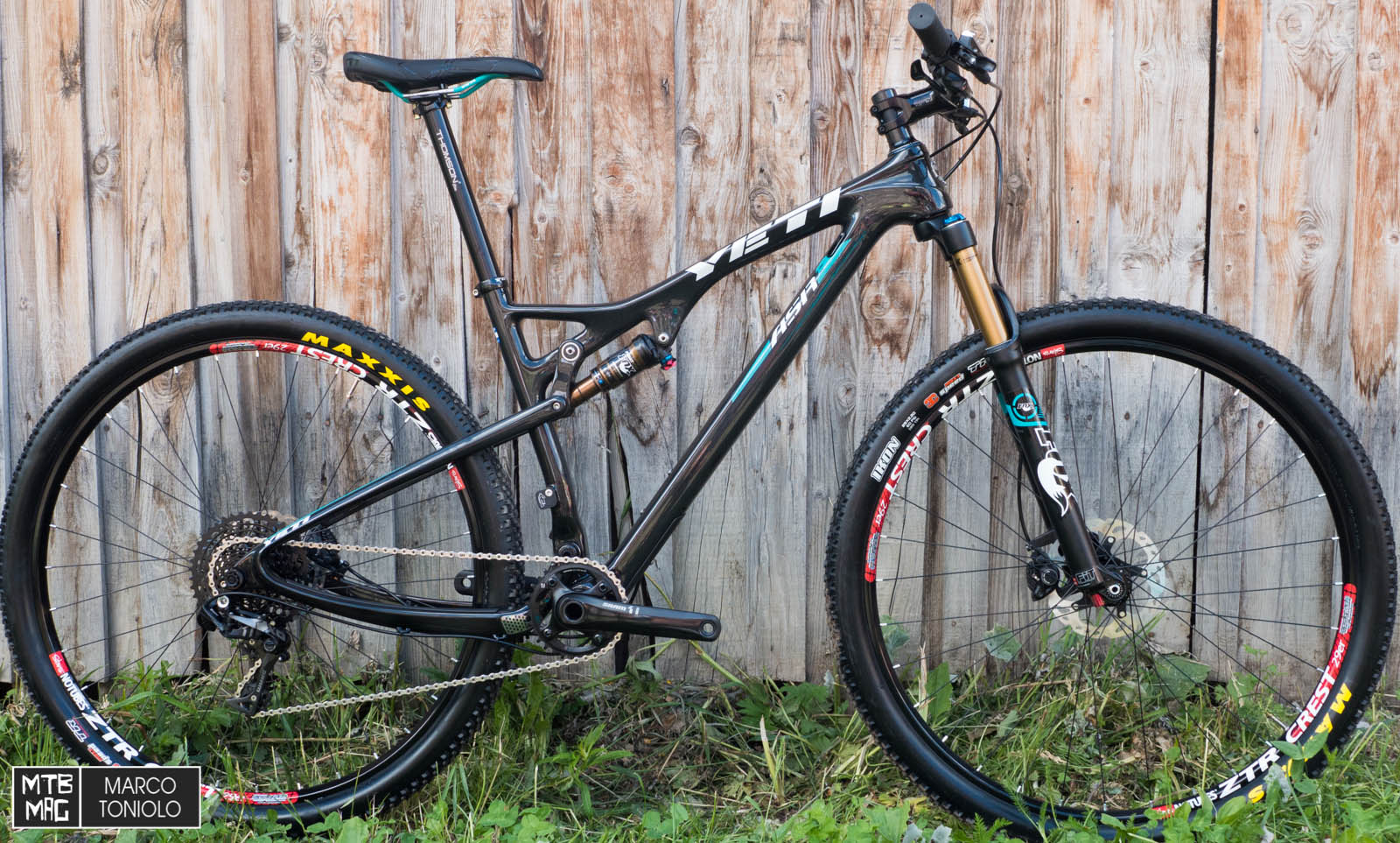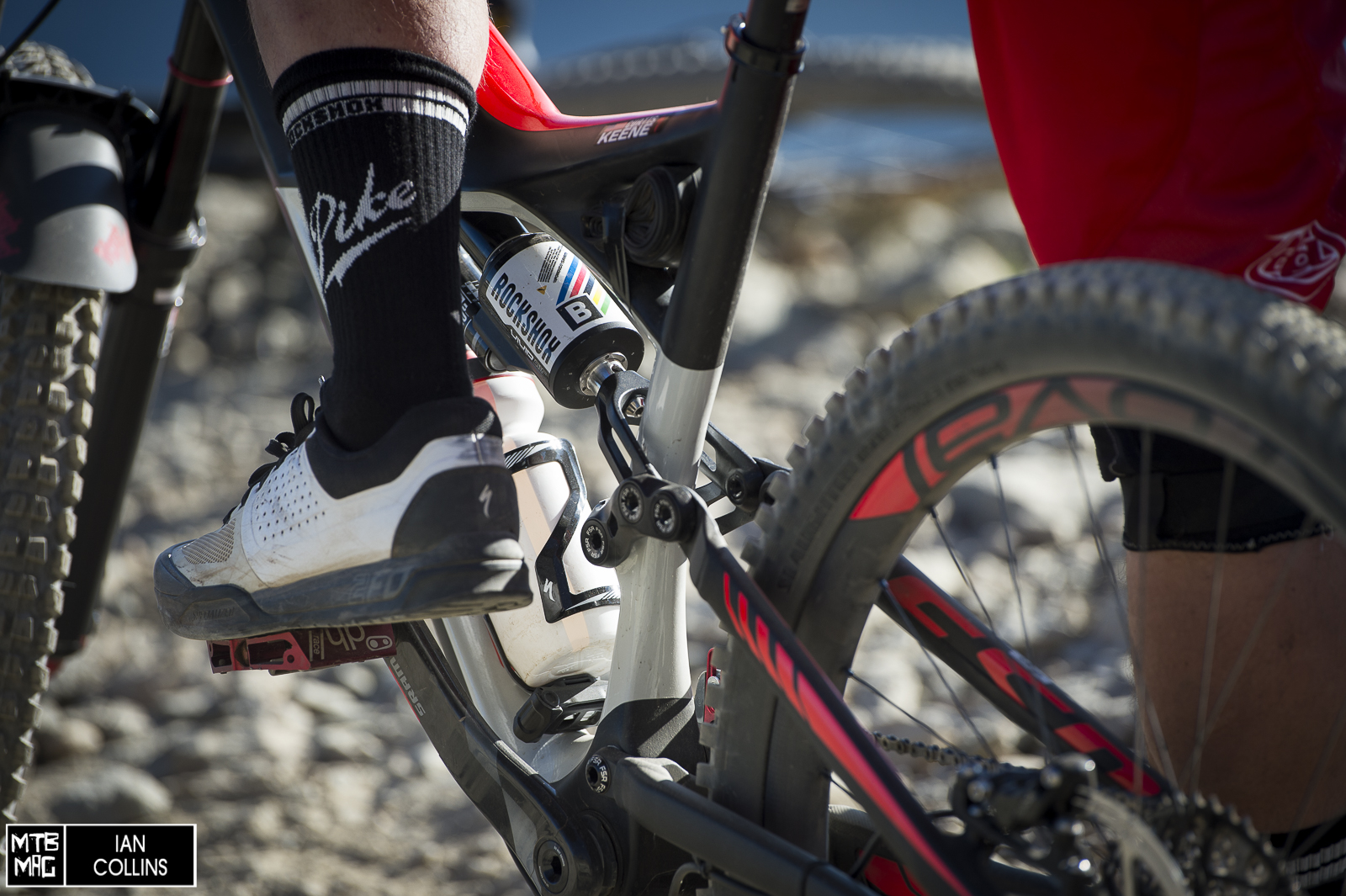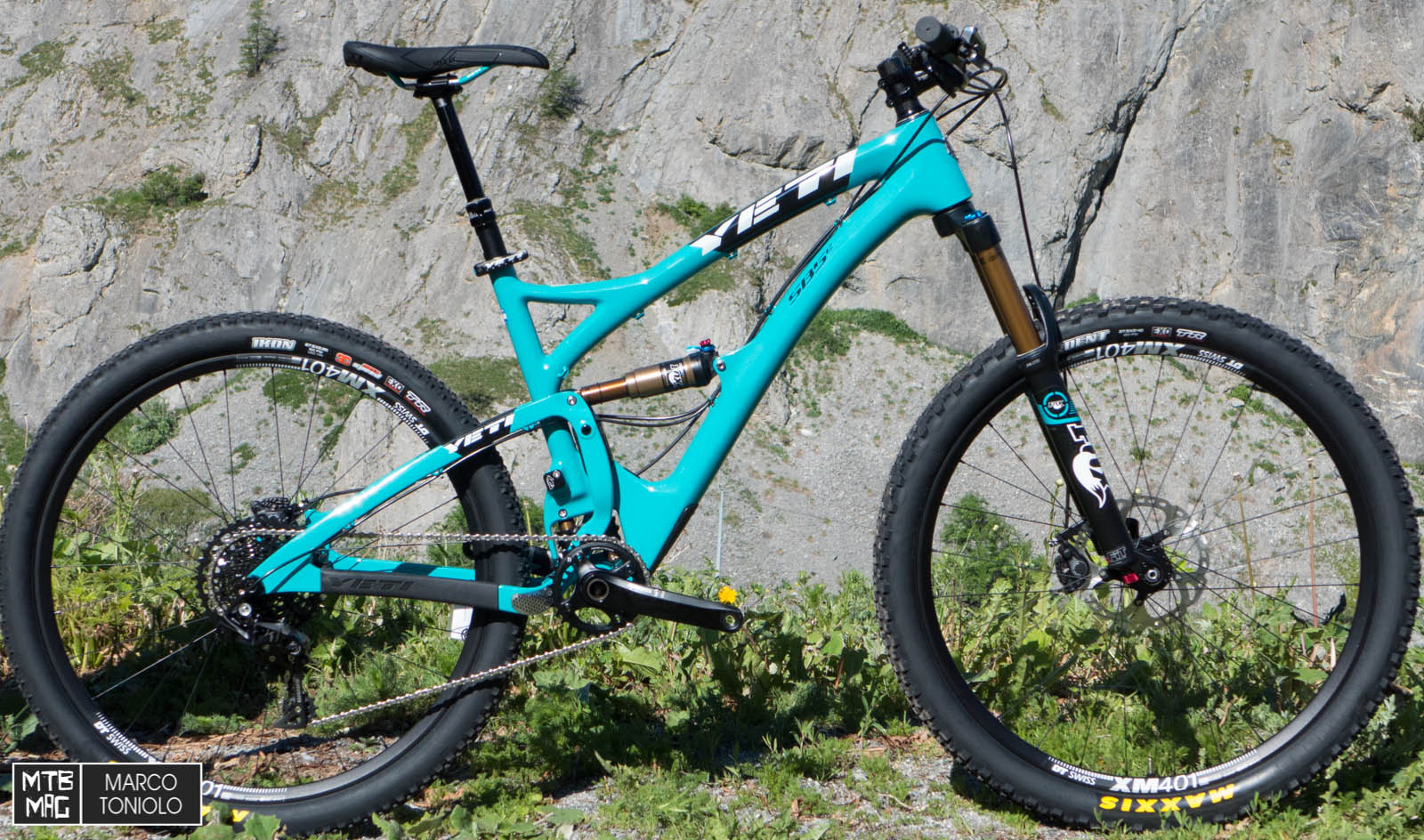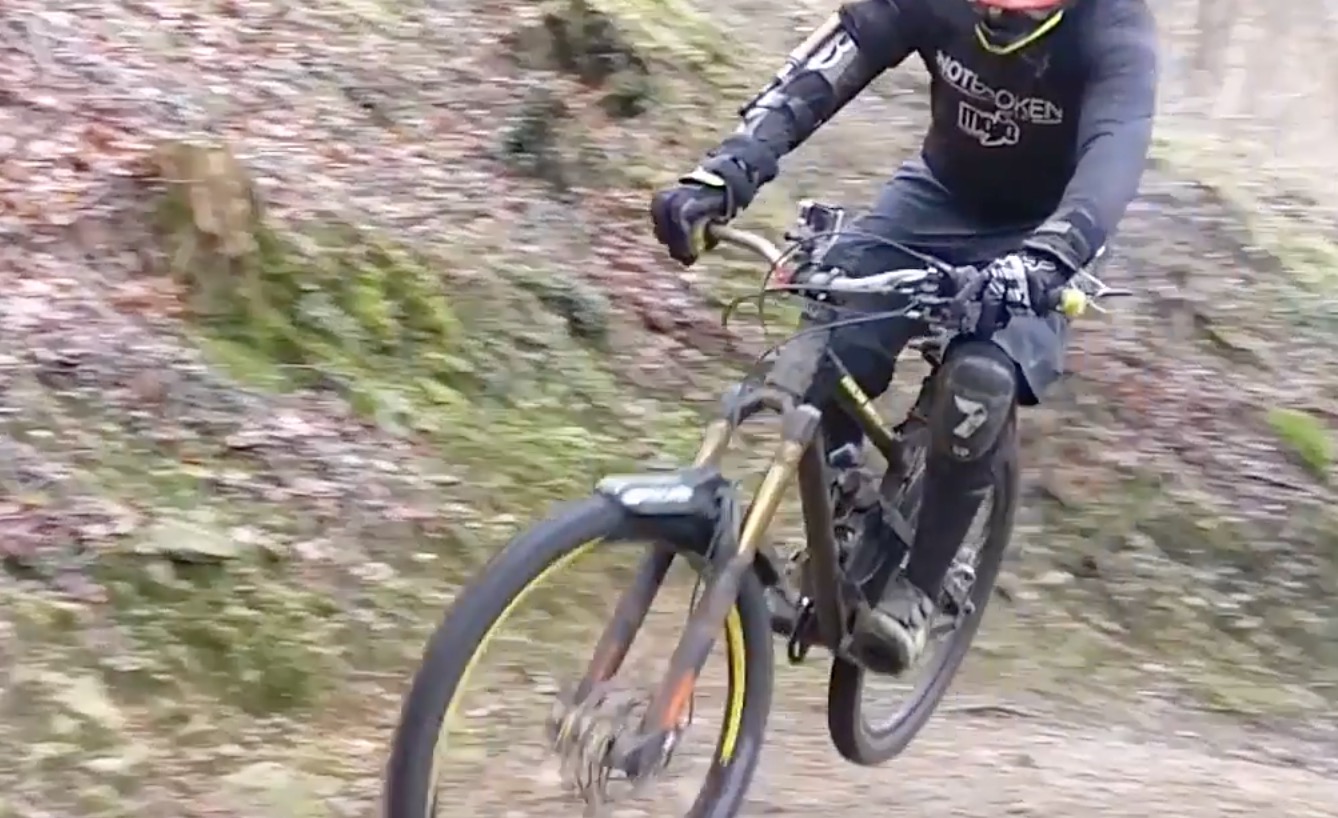[ad3]
After the comparative test between the Trek Slash and the Specialized Enduro 29, we are once again testing a 29er Enduro bike a lot of riders are curious about. The Yeti SB5.5 is a not so aggressive and more of an all around bike, which means it is more balanced between climbing and descending than the mentioned competitors, which are more downhill oriented. DSB provided us a with custom build of the SB5.5 based on the XX1 Eagle kit specs and then modified by the Italian distributor with other components from the brands that he imports in Italy. We tested the bike on a great variety of trails to prove its overall qualities, including a deep session on the famous Finale Outdoor Resort trails, thanks to Ride on Noli shuttle service and to Hotel Deutsche Familien for their hospitality.
Overview
In terms of duty, the Yeti Cycles SB5.5 model lies between the SB5 and the SB6, overlapping across both the Trail and Enduro segments. The frame is fully made of carbon, including the rear triangle. Yeti offers two types of carbon fibers called Turq and Carbon. The first one is done with carbon of the highest quality and is sold as frame kit or with the 3 most expensive builds. The Turq frame has a carbon dogbone and titanium hardware while the Carbon frame has an alloy dogbone and steel hardware. The Carbon version is made of standard carbon and is available in the two more affordable builds by Yeti. The weight difference between the two frames is approximately 250 grams.
The suspension system is the usual Switch Infinity which Yeti installs on all of their bikes. It is a variation of a virtual pivot system in which the lower link is replaced by a linear moving system, which is the core of the Switch Infinity system, instead of the rotating one.
This mechanism, designed in collaboration with FOX, consists of a block which slides on two cylinders with Kashima coating to minimize friction. This is not, as one could think, hearing about FOX and Kashima, a kind of shock or hydraulic system, but rather a mechanical sliding system. On the block, fitted with grease ports to lubricate the system, is the swingarm main pivot which rotates on bearings. During the swingarm compression, the main pivot on the Switch Infinity block carries out a floating movement. Thus, the main pivot point is constantly changing throughout the travel. It moves upwards by few millimeters in the first half of the travel, then moves downwards in the second half.
Because of this, the wheel trajectory is slightly rearward to improve medium size bump absorption. At the same time, the Switch Infinity provides optimized anti-squat which improves pedaling efficiency in the first half of the travel, while in the second half, a lower chain tension enables the suspension to soak up big hits nearly unimpeded by drivetrain forces. The dogbone makes the swingarm rotate forward to compress the shock and control the floating movement of the Switch Infinity system.
A FOX Float X Factory Kashima EVOL manages 140mm of rear travel. It is adjustable in Open, Medium and Firm position and compression has a three-click adjustment in Open mode. The Float X is well tuned for the SB5.5’s so that the Medium position that doesn’t need to be particularly stiff on a stable system such as the Yeti Switch Infinity. Regarding the Firm position instead, we’d have preferred a solution closer to a full lock out. One negative aspect of the Float X is the uncomfortable position of the rebound adjustment knob, but its performance definitely makes up for it.
The fork is a 160mm FOX 36 Float Factory Kashima provided in the standard build, with FiT4 hydraulic cartridge, adjustable in the classic Open, Medium and Firm position and with compression fine tuning in Open position. The hub is Boost 110×15. The 36 has special decals in order to match the traditional Yeti turquoise paint.
The standard build is named after the SRAM XX1 Eagle transmission, which is also installed on our test bike. Derailleur, shifter, cassette and chain are all high end components of the American brand, while the DSB custom spec’d crankset is different from the 30tooth XX1 Eagle crankset. On our bike we have a carbon RaceFace Next with 32tooth direct mount chainring.
In every SB5.5 build available the dropper post is a 125mm RaceFace Turbine. This is a good quality model, smooth, fast and reactive. Just a small pressure on the lever is needed to gently activate the Turbine. The lever is comfortable and ergonomic but pretty long, so it has to be carefully positioned in order to be able to reach it without having to lift the thumb too far from the handlebar. The version with horizontally positioned 1X lever (available as an optional) would be handier. The saddle is a SDG Duster P RL with titanium rails.
Handlebar and stem are both manufactured by RaceFace, in 35mm standard. The Next handlebar is 760mm wide and has a 20mm rise, chosen by DSB instead of the 800mm SIXc from the original specs, while the stem is a 50mm long Turbine 35 with a 6° rise. Considering the height of the 29” fork with 160mm of travel, we placed the stem as low as possible. The sloping stem, installed with a negative angle, enable us to lower the handlebar height even more. After some tests, though, we found the best positioning with a 5mm spacer and the stem in positive position. The handlebar height from the ground is slightly higher then what we are used to, but it is the most balanced on this bike.
The standard SRAM Guide RSC braking system has been replaced by DSB with a Hope Tech 3 E4 with 180mm semi-floating rotors on both wheels. Those are Enduro enduro level brakes made by the British company which, thanks to the four pistons caliper, provide a strangely progressive feeling that took some getting used to: there’s almost no braking at initial contact of the pad with the rotor, then progressively the power increases and braking becomes more efficient. That said, the lever position is very comfortable thanks to the available distance and angle adjustments which allow to set the system according to one’s preferences. On the other hand, we felt the shape and size of the CNC lever itself, which is quite thick, rather uncomfortable.
An Industry Nine wheelset, imported by DSB, has been chosen instead of the ENVE M70 HV offered on the standard Yeti build. The Torch Enduro 29” wheelset is a model from last season, with 26mm internal width rims. 32 CNC’d aluminum spokes, instead of threading into a nipple, sit in the rim’s spoke hole, while the other end is threaded into the hub flange. The hubs provide smooth, drag free rolling while the noisy (read: extremely noisy) freewheel won’t let you go unnoticed. The noise is due to the 120 point of engagement, every 3 degrees, with a 6 pawl mechanism. The wheels are Tubeless with 2.30” Maxxis High Roller II EXO 3C tires.
Cable routing is internal. The ports in the head tube area are carefully positioned to provide a smooth cable alignment to the bar and are equipped with specific rubber fittings to seal off from water and dirt, as well as prevent those annoying noises caused by cable movement while riding.
On the rear triangle, both the chainstay and the seatstay are efficiently protected by plentiful and carefully placed rubber parts, and a metal plate protects the area close to the chainring. The bottle cage mounts are placed in the middle of the hard rubber shell which covers the down tube: not the best, but the only possible position considering the frame design. Around the bottom bracket shell is the ISCG mount, for those who want to install a chain guide or a rock guard.
Geometry
The Yeti SB5.5 is available in only 3 sizes: Medium, Large and Extra Large. Unlike the other models, Extra small and Small sizes are not available. Therefore, considering the Yeti size chart, this bike is meant for riders taller than 5’6″.
Climbing
As previously said, it took us some time to figure out the right handlebar height. At first, the riding position felt too high but after a couple of rides we started to gain confidence, we felt better suited on the bike. At the beginning the size seemed too short also for our 5’9″ rider who should fit perfectly on a size medium (5’7″ – 5’11”) according to Yeti’s suggestion. Then, already after a few rides, we had to admit that Yeti was right: the riding position is comfortable and perfectly balanced both uphill and downhill. On fast climbs the position is comfortable enough considering the Enduro-oriented geometry. The movement of the shock is minimal in Open position so the Firm position is to be used only on compact, terra firma (on asphalt or unpaved road). For this reason, as already said, we think it would be useful to have also a full lock out solution on Firm position. On bumpy ground it’s comfortable pedaling with the shock in Medium or Open position, thanks to the stability of the Switch Infinity system.
The optimized anti-squat figure (thanks to the Switch Infinity system) enabled us to set the shock in Open position on the most technical and irregular climbs, enjoying the SB5.5’s perfect traction without the risk of hitting rocks with the pedals. This feature is useful also on the punches which you often find in the middle of downhill trails, where you can focus on the riding and the physical effort without the distraction of adjusting the shock. Notwithstanding the fork long travel and the handlebar height, the handling is smooth since the front is easy to control, allowing the Yeti 29er to climb like a Trail bike. The 32tooth chainring installed by DSB requires some fitness to climb the steepest and most technical section, while the standard 30tooth would have provided more agility and better acceleration margins.
Downhill
The excellent control on offer is mainly thanks to the central riding position and the modern design of the handlebar. On mixed sections it is balanced and fast in the changes of direction; it’s very maneuverable. Fast cornering stability and precision are incredible: you feel locked in, like you’re on rails. The stiff frame is extremely responsive to rider movements and conveys a feeling of solidity.
In fast and swoopy sections, the nimbleness improves as the speed increases: if on slower and less steep parts the bike feels a bit clumsy and requires a lot of physical strength, on steeper or faster terrain it becomes agile and precise straight away. This is fairly typical of most 29ers and unsurprisingly, the best way to ride the SB5.5 is to find the fastest lines, even if they’re aggressive and demanding. The bike can perfectly handle these trajectories and rewards the rider with full control and pure pleasure.
It took us a while to find ideal settings for both the front and rear suspension, but then the result is super balanced. On fast and harsh terrain the bike is very stable and soaks up the bumps efficiently. Initial sensitivity of both front and rear suspension is really good. The shock responsiveness increases with the speed: at low speed it is a bit lazy but provides more grip and traction, while at high speed it gets very responsive, supporting the dynamics of the action. Shortly after the middle of the travel we find a dead point of the Switch Infinity system which corresponds to the “top dead centre” of the stroke on the two cylinders: it is usually unnoticeable, but in rare specific circumstances, such as back to back medium hits, this deadlock point cause a stiffening of the suspension.
Conclusions
The SB5.5 combines the downhill performances of an aggressive fast Enduro with the great sprightly, nimble attributes of a Trail bike on climbs and over mixed terrain. The suspension system is excellent while pedaling and a solid performer on the downhills. The frame is stiff and light. Yeti Cycles is used to offering solid and innovative products which are never banal… and the SB5.5 is another good hit.
Specs and prices
SB5.5 Turq XX1 Eagle: $10,599
SB5.5 Turq X01 Eagle: $7,099
SB5.5 Turq XT: $6,599
SB5.5 Carbon Eagle: $5,699
SB5.5 Carbon XT/SLX: $4,799
SB5.5 Turq telaio: $3,500
Available in 2 colors: grey, like the test bike, or the traditional Yeti turquoise.
Measured weight of the custom build version tested: 12.3kg

